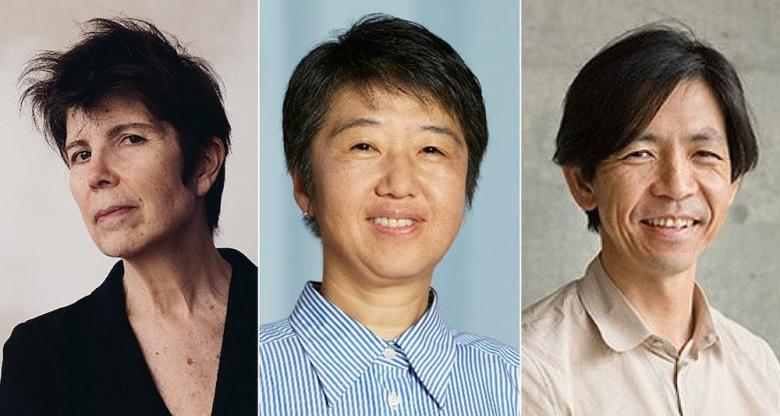Three Architects Honored with Wolf Prizes
John Hill
11. February 2022
L-R: Elizabeth Diller (Photo: Geordie Wood), Momoyo Kaijima, Yoshiharu Tsukamoto (Photos courtesy of Wolf Prize)
The Wolf Foundation, which "both celebrates and promotes exceptional achievements in the Sciences and the Arts worldwide," is giving 2022 prizes to Elizabeth Diller of Diller Scofidio + Renfro, and Momoyo Kaijima and Yoshiharu Tsukamoto of Atelier Bow-Wow.
The Israeli non-profit organization has been giving Wolf Prizes to "scientists and artists for their achievements in the interest of mankind and friendly relations amongst peoples" since 1978, but architects are included in the list of laureates only occasionally — 18 of the now 345 laureates, to be exact (a full list is at bottom). Other categories include agriculture, chemistry, mathematics, medicine, and physics in the Sciences, and arts and music in the Arts. Each winner receives a certificate and a monetary award of $100,000.
Elizabeth Diller, best known as a designer of the High Line and the transformation of Lincoln Center in New York, was named a laureate "for her exceptional and influential work connecting architecture to artistic practice, engaged in the public domain." For Momoyo Kaijima and Yoshiharu Tsukamoto of Atelier Bow-Wow, the prize recognizes "their work that highlights the importance to architecture of its ethnographic and inhabitational characteristics, in their writings and practice." The language describing the trio of prizes is worth quoting at length, but full commentary on their prizes can be found via the links above and in the list at bottom.
At a time of considerable world change, when social and cultural values have been questioned, these three are outstanding in challenging norms to advance the field of architecture and its wider influence. Whilst very different in their production, they share a common vital quality of bringing research, pedagogy and practice into critical confluence for the advancement of their field. In doing so, they reveal the degree to which art, science, and engagement with society, require values that can be interrogated and challenged, as a central part of their contribution. Conscious of the wider affects of architecture, each recipient embodies the idea of collaboration in varied ways, embracing geographic, cultural and methodological differences to be celebrated: excellence through diversity. With their radical architectural visions, they continue to be meaningful influencers of future architectural generations. They have developed the agency of architecture through an expanded field, in engaging politics, the city as the base for social action, and the imperative of reaching broader audiences.Wolf Prize Laureates in Architecture:
- Wolf Prize Laureates in Architecture 2022: Elizabeth Diller, Momoyo Kaijima, Yoshiharu Tsukamoto
- Wolf Prize Laureate in Architecture 2019: Moshe Safdie
- Wolf Prize Laureate in Architecture 2016: Phyllis Lambert
- Wolf Prize Laureate in Architecture 2013: Eduardo Souto de Mouro
- Wolf Prize Laureates in Architecture 2010: David Chipperfield, Peter Eisenman
- Wolf Prize Laureate in Architecture 2005: Jean Nouvel
- Wolf Prize Laureate in Architecture 2001: Álvaro Siza
- Wolf Prize Laureate in Architecture 1997: Frei Otto
- Wolf Prize Laureate in Architecture 1997/8: Aldo Van Eyck
- Wolf Prize Laureates in Architecture 1992: Frank O. Gehry, Denys Lasdun, Jørn Utzon
- Wolf Prize Laureates in Architecture 1988: Giancarlo De Carlo, Fumihiko Maki
- Wolf Prize Laureate in Architecture 1983/4: Ralph Erskine
Related articles
-
Three Architects Honored with Wolf Prizes
on 2/11/22
